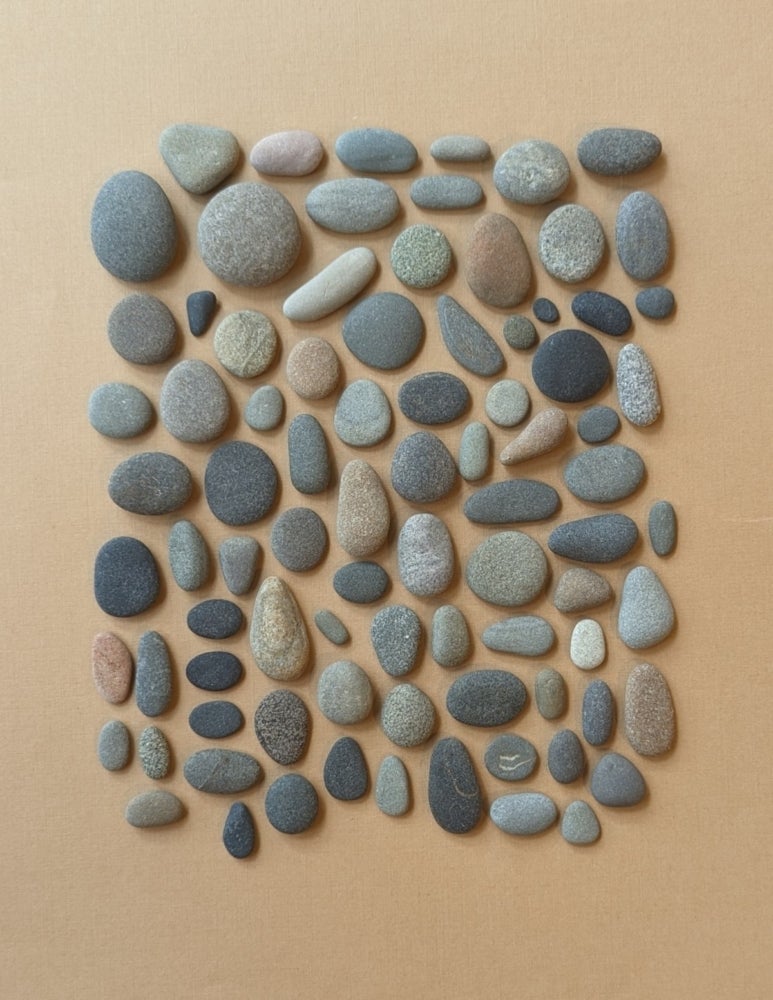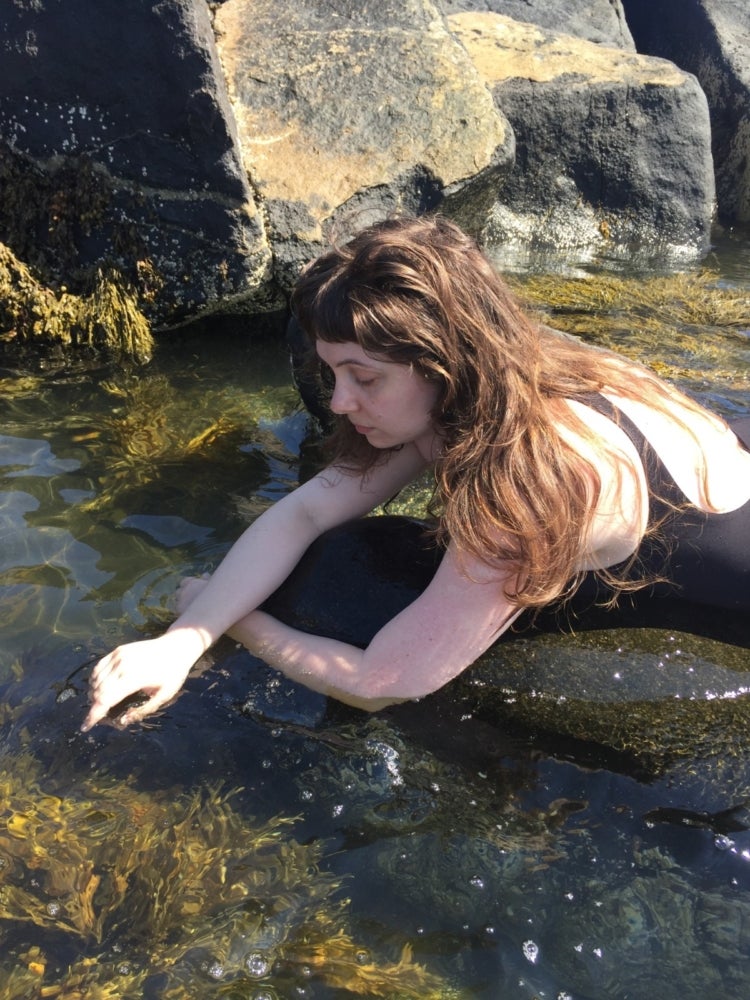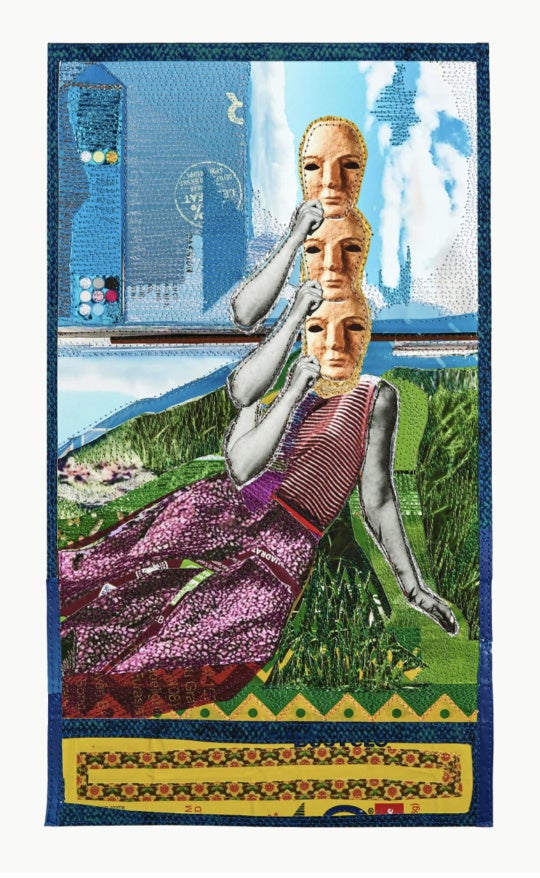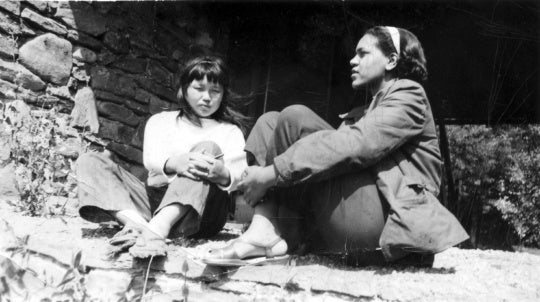
Faran Riley Peterson left the South for school in Boston in 2005 and moved to New York to pursue her art career in 2011. In March 2020, at the beginning of the COVID-19 pandemic, she decided to return home. I visited her at Sulfur Studios in Savannah, GA, where she has been working for the last few years to talk with her about her practice and recent works. A painter, sculptor, and accumulator, she works in acrylic and pencil on paper or panel. Peterson acts as a curator of the natural artifacts she collects. Rocks, shells, fragments of coral, these things find space in her pockets, installations, and in the paintings themselves as subjects.

Peterson’s workstation is across from a long wall displaying larger works and smaller panels in progress. There is a flat file with shelves loaded with boxes and labeled bags containing her found materials. On each flat surface: books, colored pencils, tubes of paint, sheets of paper laid out with pieces of coral, and small smooth rocks carefully arranged atop.
In one recent large-scale acrylic painting tacked to the wall, she has three medium-sized rocks sitting beneath an open window, a breeze pushes the curtains out into the room where an outstretched black cat rests on carpet. The rocks feel like characters in this scene, with the sharp silhouette of palmettos peeking in behind the billowing curtain edges. Her paintings sit in liminal space between memory and imagination. However, this imagery space feels quintessentially familiar to the coastal South. It is that recognizable sensation of the breeze from the window on a cool night, or the taste of the salt in the air on a walk along the beach in the glow of the moon, a feeling of one’s lovingly rendered sense of home, that pushes through in a lot of Peterson’s paintings.
Heather C. MacRae: Do you feel like your homecoming to the South from New York comes through in your recent paintings?
Faran Riley Peterson: I think so, I go for long walks at night, and I look at foliage and the moon peeking through the trees. Coming back, I was getting reacquainted with all that. We started going out to Little Tybee and going camping, the [recent] imagery comes from that kind of wild landscape.

HCM: Your work doesn’t feel like it has much of a relationship to an urban environment.
FRP: Towards the end of my years in New York, I started drawing a lot of brick walls with vines growing all over them. I was really inspired by all these empty lots in my neighborhood, I was doing these stray cats and these dilapidated structures…so that was, I guess, New York kind of decomposing for me and the wild South was calling.
HCM: Are all the things you collect local to the Southeast?
FRP: Both sides of my family have a connection to this island a place called Vinalhaven in Maine. It’s an archipelago that’s volcanically formed and every point on the island has a completely different geographical landscape. There’s this landscape of this local [imagery] but then there are elements of these kind of geological things that I’ve found and been inspired by.

HCM: I feel like when we collect things, it’s very much a personal thing. How do feel about sharing some of these more introspective artifacts or pieces of your collections to an audience?
FRP: One of the things I really love about collecting things is that I could spend hours by myself, but when I go to these places and I have somebody with me they’ll pick up something and they’ll show it to me and they’ll be like, “Isn’t this amazing?!” and I’m like, “It is! But that’s not my rock, I wouldn’t have picked that one.” I haven’t quite worked this out yet, I have a hard time with the idea of letting go of something, and so I also really feel guilty about taking these things from their place. Especially rocks because there’s this whole component of erosion and they’re there for a reason so I am really driven to do something with them to honor them. I would actually like to return them to the place that I got them from. I don’t know if that needs to be overly ceremonial.
HCM: The curating of the found objects feels observational where paintings feel more conversational. How do you find the two relating?
FRP: For a long time, I’ve done the two things very separately. I would come into my studio and make these paintings and drawings that were very much inspired by the South, and I was always finding and collecting things and I wanted to find a way to marry the two without being so deliberate about it. I found some threads but then one night I woke up at like four in the morning and I sat up in bed and I was like, “I gotta write some shit down.”





